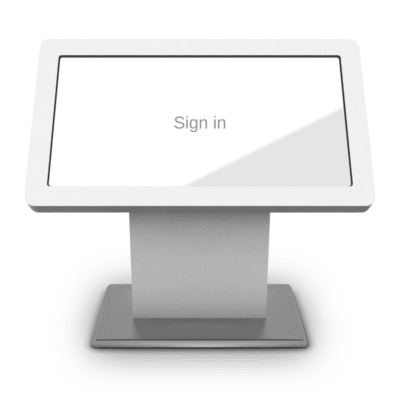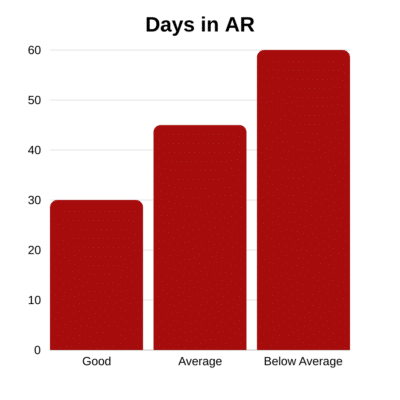The title of this blog, “How to improve your medical billing processes” is pretty much always at the top of mind for most physicians and medical practice managers. Of course, they are usually preceded by questions such as “Why is my accounts receivable so high?” or “Why does my revenue cycle department get so many claims denials”?
In this Article …
- Diagnosing Your Medical Billing Health
- The Medical Billing Process starts prior to a Patient Arriving
- Patient Arrivals and the Billing Process
- Capturing Charges and Medical Codes
- Filing Individual Claims
- Volume, Days in Accounts Receivable, and Staff
- Best Practices in the Medical Billing Process
- Give Your Practice a Billing Check-Up
- If You Outsource Your Billing
- Some Reports to Ask For
- A Few Principles for Your Medical Billing Process
- A Medical Group Example
- Just the Beginning
Diagnosing Your Medical Billing Health
As you consider your billing department, do you think it’s operating at peak efficiency? Is it bringing in as much cash as you think it should? Some danger signs to look for include:
- Your accounts receivable are going up, but you’re not seeing more patients or performing more procedures.
- You haven’t implemented a rate increase lately.
- A significant percentage of your AR is in the over 120 days bucket, and a declining percentage of your AR is new, defined as 0 to 30 days old.
Let’s take a look at some of the elements that go into the billing process most healthcare providers still use. The good news is that modern billing and accounts receivable systems (or revenue cycle management systems if you prefer) can streamline the medical billing process enormously. Of course, an efficient medical billing process still requires employee training programs and management to achieve lasting improvements.
The Medical Billing Process Starts Before a Patient Arrives
One important step medical practices can take is to acquire as much patient data as possible, even before a patient arrives. Some modern patient appointment applications can prompt registration staff to get demographic and financial coverage information at the front end of the process. And some systems even allow new patients to make appointments and submit insurance information at the time of making the appointment.
New regulations such as the No Surprise Billing law also require healthcare providers to provide Good Faith Estimates to patients with no insurance coverage. This is another reason to have a robust system for making appointments and capturing insurance information.
Patient Arrivals and the Billing Process

Modern billing and accounts receivable or electronic health record systems also offer kiosks located in the waiting room. Patients can update their insurance provider information and other patient information using the kiosk. They can also perform these updates using the patient portal of the EHR system. These approaches can even improve the patient experience, at least with respect to your billing process.
Capturing Charges and Medical Codes
Modern systems, especially integrated EHR/Billing systems, enable medical providers to implement an efficient billing process. Electronic health record systems typically help healthcare providers improve medical record documentation. Many systems offer support within the application to identify the correct procedure code for the services provided. Avoiding medical coding errors contributes to minimizing denied claims, and improves cash flow.
Filing Individual Claims
Another revolutionary area in the medical billing process is the claims processing and submission processes. Almost all insurance providers accept and encourage the electronic submission of claims via one of many claims clearinghouses. And Medicare requires participating providers to submit claims electronically if they submit more than 100 claims per year. Electronic submission can result in more timely payments and fewer denied claims.
Volume, Days in Accounts Receivable, and Staff

- Your staff is bringing you an unusually high number of accounts for write-offs or referrals to collection agencies, especially of patients you’ve routinely seen.
- Your days in AR, the average time it takes to collect on your accounts, is over 60 days.
- Does your office manager or revenue cycle management routinely calculate this figure and report it to you?
- The amount of staff you’re using for billing and collections exceeds the average for your specialty. For instance, internal medicine or family practice require relatively more employees for all billing and collection activities compared to a general surgery practice.
Best Practices in the Medical Billing Process
Here are some additional best practices:
- Does someone update insurance payment rates in the billing and accounts receivable system contract file so payments from insurance companies can be verified against the contract rate or the contract fee schedule?
- Does your staff follow up timely on unpaid or underpaid claims? Do they dispute rejected claims? Many insurance company contracts require that you submit claims within 30 or 45 days from the date of service. If your original claim is not received, you can get denials for untimely filing and lose out on revenue.
- Does your staff follow up on past-due claims each month? Do they document this in your billing system? Many modern billing and accounts receivable systems allow for a virtually paperless billing office.
Give Your Practice a Billing Check-Up
Here are several simple things to check on that will help you compare your office’s procedures to some best practices:
Does your staff track your appointments and visits to make sure medical records documentation, billing, and coding are completed so they’re all accounted for? Do they use your scheduling software to do this? If not, you may not be billing for each patient you see.
- Is your fee schedule consistent for all types of patients? Some practices only charge Medicare patients the Medicare allowable amount, but Medicare pays its allowable amount or the amount you bill, whichever is lower.
- If your staff doesn’t keep the fee schedule updated, you may be losing dollars.
- Does your staff collect co-payments at the time of the visit? Co-payments may be ten to twenty-five percent of what you can expect to collect for an office visit.
- Is your staff sending payment reminders to patients with an outstanding balance? Do they inform you of patient files where patient payments are seriously delinquent?
If You Outsource Your Billing
If you use outside medical billing management services, are they part of your tracking system?
- Do their procedures include the ones I just mentioned, and do they give you timely, understandable reports so that you can keep track of how well they’re doing?
- An outside billing service can be a viable option, especially when you’re starting a practice.
- If you’re considering using outside medical billing professionals, be sure to conduct thorough due diligence prior to signing a contract.
Some Reports to Ask For
To carefully monitor your billing department’s performance, there are several reports you should ask for and review each month:
- An AR aging report shows the amounts in your AR aging by category. The vast majority of your unpaid accounts should be less than 60 days old.
- A revenue report tracks the amount you’ve billed and collected each month, and the amounts being adjusted off each month.
- A report on adjustments by type shows adjustments for amounts not collectible for Medicare or due to insurance company contracts.
A Few Principles for Your Medical Billing Process
As you think about your billing department, keep in mind a few core principles for management and organization.
You should always be on the lookout for best practices, challenge your staff to implement them, and reward them as they make improvements. Remember, recognition for a good job is almost as good as cash most of the time.
- Demand accountability by monitoring performance. Your staff will respond to the things that you consider important, especially if you are consistent in asking for them.
- Pay special attention to risk areas such as patient payment plans and financial hardship waivers. Track denials and problematic collections.
- Limit the opportunity for fraud and embezzlement. Many physicians are victims of embezzlement by employees they trusted implicitly. Dividing up the duties of banking funds and posting payments is important, and there are ways to do it even in a small office.
- Make sure you’re getting reports that show deposits match the amount of payments actually received and posted on patient accounts.
- Finally, make sure you have policies and procedures for the business’s billing process. These can provide guidance to existing employees and are vital to training new staff members thoroughly.
A Medical Group Example
Taking a critical look at your billing department can yield significant results. In this case study, using the system capabilities to their full extent yielded a major increase in cash flow and reduced days and accounts receivable to a much more manageable level, setting the stage for further improvements.
Just the Beginning
The principles we’ve talked about, the things to look for, and the recommendations we’ve made are just the beginning of a thorough look at your billing and collections process. There are many more ways to improve your bottom line. Contact us for more information!


 Does your staff track your appointments and visits to make sure medical records documentation, billing, and coding are completed so they’re all accounted for? Do they use your scheduling software to do this? If not, you may not be billing for each patient you see.
Does your staff track your appointments and visits to make sure medical records documentation, billing, and coding are completed so they’re all accounted for? Do they use your scheduling software to do this? If not, you may not be billing for each patient you see. You should always be on the lookout for best practices, challenge your staff to implement them, and reward them as they make improvements. Remember, recognition for a good job is almost as good as cash most of the time.
You should always be on the lookout for best practices, challenge your staff to implement them, and reward them as they make improvements. Remember, recognition for a good job is almost as good as cash most of the time.